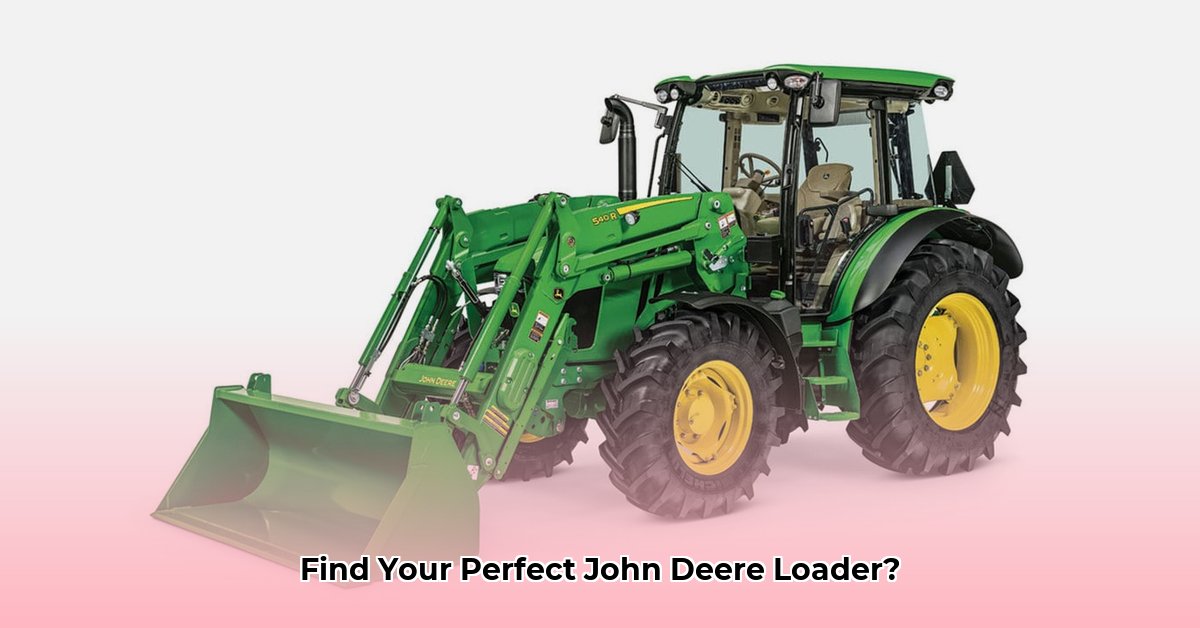
Selecting the right front loader significantly impacts farm efficiency and sustainability. This guide helps you choose between Mechanical Self-Leveling (MSL) and Non-Self-Leveling (NSL) loaders, considering factors like budget, workload, and soil conditions. The optimal choice depends on your specific needs and budget. For other brands, check out more information on other loaders.
Understanding MSL and NSL Loaders
The core difference lies in bucket leveling. MSL loaders automatically maintain a level bucket, regardless of arm tilt, ideal for uneven terrain. NSL loaders require manual bucket leveling, demanding more operator skill but potentially offering cost savings.
Comparing John Deere Front Loader Models
This table compares popular John Deere MSL and NSL models. Remember, pricing is an estimate; consult your local dealer for exact figures. Always verify tractor compatibility using official John Deere resources.
| Model | Type | Lift Capacity (lbs) at 20 inches | Compatible Tractors (Examples) | Estimated Price (USD) |
|---|---|---|---|---|
| 120R NSL | NSL | 1500 | 5075E, 5085E, 5090E | $XXXX |
| 120R MSL | MSL | 1860 | 5075E, 5085E, 5090E | $YYYY |
| 220R NSL | NSL | 2500 | 6020M, 6120M, 6140M | $XXXX |
| 220R MSL | MSL | 3500 | 6020M, 6120M, 6140M | $YYYY |
| 300E NSL | NSL | 3000 | 7020GN, 7030GN, 7230R | $XXXX |
| 300E MSL | MSL | 4020 | 7020GN, 7030GN, 7230R | $YYYY |
"XXXX" and "YYYY" represent placeholder pricing.
Choosing the Right Loader: A Step-by-Step Guide
Define Your Budget: MSL loaders typically have a higher initial cost. Determine your maximum investment. Is a slightly higher upfront cost justified by long-term efficiency gains?
Assess Your Typical Loads: What materials will you frequently lift? Heavier loads require higher lift capacity loaders. Will you be moving primarily round bales, pallets, or lighter materials?
Verify Tractor Compatibility: Confirm loader compatibility with your specific tractor model using the John Deere compatibility guide. Improper matching can lead to performance issues and safety risks.
Consider Soil Conditions: Excessive ground compaction can damage soil structure and reduce crop yields. Lighter loaders may be preferable for soft or loose soils. How will your choice impact your long-term soil health?
Evaluate Farm Size and Operations: Larger farms with high-volume material handling may benefit from MSL loaders' increased efficiency. Smaller operations might find an NSL loader sufficient. Does the enhanced speed and precision of an MSL loader outweigh its increased cost for your operation?
Maintenance and Safety Best Practices
Regular maintenance is critical for both MSL and NSL loaders. Follow John Deere's recommended maintenance schedule, including fluid checks, hose inspections, and lubrication. Prioritize safety; always operate within the loader's limits and follow all safety guidelines. Proper training is crucial for safe operation.
Conclusion
Selecting the right John Deere front loader hinges on careful consideration of individual needs and budget. By systematically evaluating your needs and weighing the pros and cons of MSL and NSL loaders, you can make an informed decision that optimizes your farming operation for years to come. Remember to consult your local John Deere dealer for the most up-to-date pricing and compatibility information.